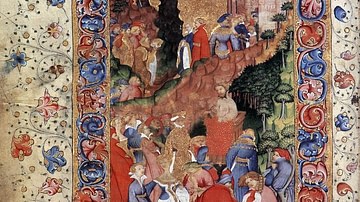Review

| Rating: | |
|---|---|
| Title: | Women and the Crusades |
| Author: | Helen J. Nicholson |
| Audience: | University |
| Difficulty: | Easy |
| Publisher: | Oxford University Press |
| Published: | 2023 |
| Pages: | 304 |
Helen J. Nicholson's latest book gives readers a window toward the contributions of women participants of the crusades, contributions that historians before and now have paid little attention to. Using primary sources from both the Christian and Muslim societies, “Women and the Crusades” is a great reading material for engaged history enthusiasts and undergraduate-level students of medieval history.
Between the 11th and 16th centuries, the idea of 'crusading' was dominant in Europe. Helen J. Nicholson's new book reminds us that crusading during this time had a much broader implication than trying to capture Jerusalem. Any journeys or expeditions in the name of fulfilling one's religious responsibilities could be called crusading. What is more important with Women and the Crusades is its meticulous compilation of diverse yet overlooked stories of women participants, giving them their much-needed scholarly attention. Because of this book's focus on narration and not necessarily on developing a clear thesis, the primary target audience group is experienced history enthusiasts.
Nicholson analyzes a broad range of primary sources and provides multiple perspectives on how people during the medieval ages portrayed women in the crusades. Looking at the motivations behind the writers of the sources, this book identifies how medieval political, social, and religious agendas have embellished, misrepresented, or stereotyped women and their contributions. Some sources discussed include the writings of Christine de Pizan (1364 to c. 1430), the Curia Regis Rolls of Henry III of England, and the Patrologia Latina, a large collection of writings by popes and medieval church officials. What is especially thought-provoking for history enthusiasts is that Nicholson brings in Muslim sources about the crusades, such as the writings of Usama ibn Munqidh (1095-1188 CE), an Arab poet and author.
The book is slightly over 300 pages long, but the actual historical writing only consists of around 150 pages. The other half of the book contains extremely helpful supplementary materials: maps of key crusade geographies, a chronology of the crusades, a list of popes, family trees of key crusade participants, and over 40 pages of endnotes and bibliographies. Because of these materials, undergraduate-level students of medieval European history can greatly benefit from using this book as a pointer for further research directions.
Nicholson has published multiple books on medieval military history and is currently Professor of Medieval History at Cardiff University. What makes Nicholson's book stand out is that it studies women of all social classes during the crusades, from elite and noble women, like Eleanor of Aquitaine (c. 1122-1204), to those of the middle or lower classes. This is an important commitment that recognizes the influence of non-noble women participating in the crusades. However, due to most surviving historical documents being about upper-class women, most of Nicholson's discussions are inevitably focused on that population.
The book is thematically divided into five chapters and many subsections. Each subsection focuses on either a time period, geographical location, or a type of contribution that women made. For instance, the subsection "Diplomacy and Intelligence" contains stories of noble and elite women who aided crusades through political methods. With this structure, the book showcases the manifold roles that women played. They were not only companions of their male counterparts as they have been depicted; women served in many positions ranging from the frontlines to the home front, and their reasoning for joining the crusades also differed from one to another. This book structure allows readers to approach each chapter and subsection independently. Chapter One should be given particular attention since it provides key historical context, including how the idea of "penitential warfare" and the differences between a "crusade" and a "pilgrimage" affected women's actions (6).
The lack of a thesis makes this book not quite suited for graduate-level students or advanced history scholars. On the other hand, Nicholson's careful and detailed retelling of women of all socioeconomic classes during the crusades makes Women and the Crusades one of the most helpful new publications for history enthusiasts and students.
About the Reviewer
Cite This Work
APA Style
Zou, Z. (2023, March 30). Women and the Crusades. World History Encyclopedia. Retrieved from https://www.worldhistory.org/review/347/women-and-the-crusades/
Chicago Style
Zou, Zhihui. "Women and the Crusades." World History Encyclopedia. Last modified March 30, 2023. https://www.worldhistory.org/review/347/women-and-the-crusades/.
MLA Style
Zou, Zhihui. "Women and the Crusades." World History Encyclopedia. World History Encyclopedia, 30 Mar 2023, https://www.worldhistory.org/review/347/women-and-the-crusades/. Web. 29 Apr 2025.




